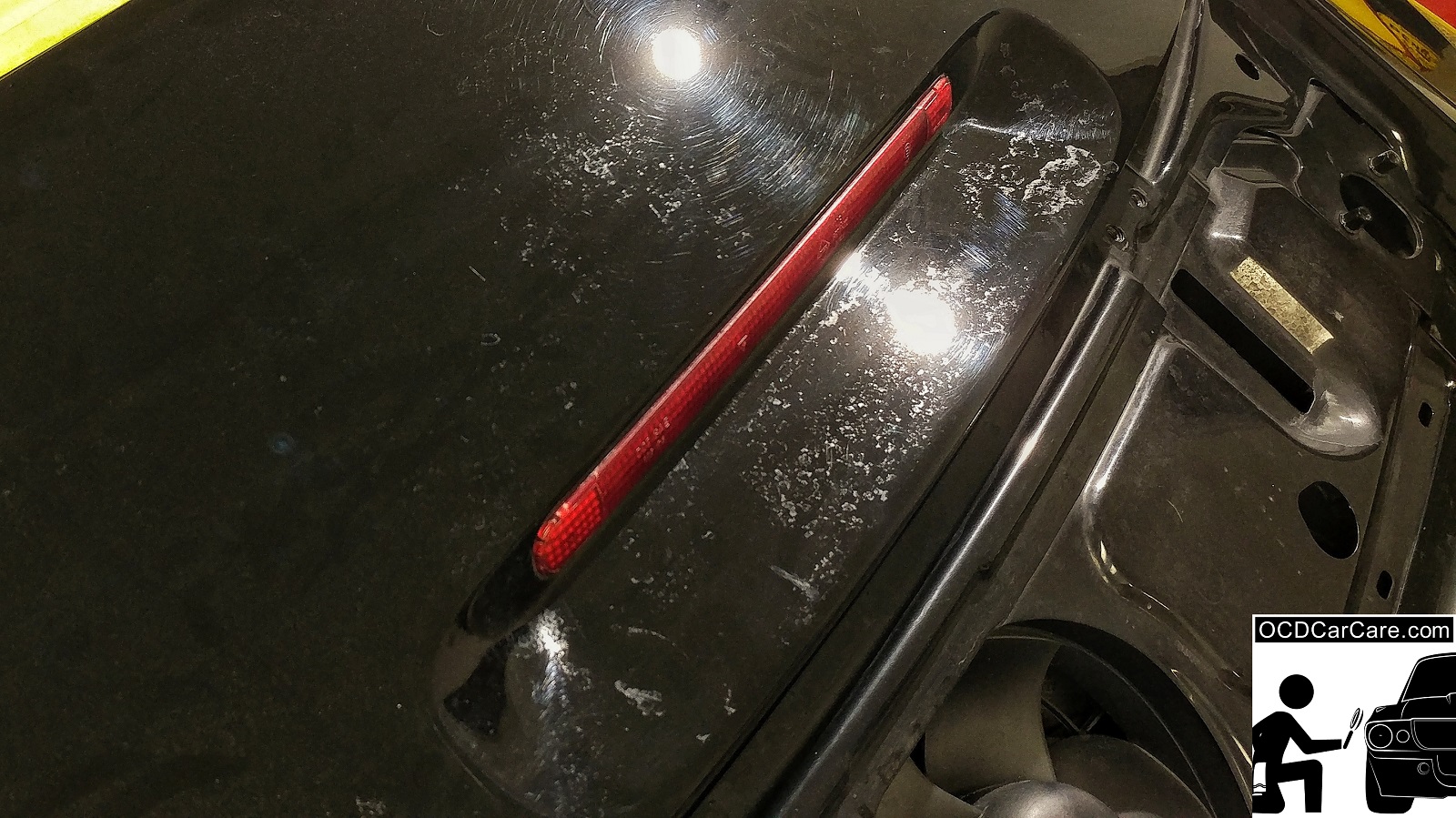Why Ceramic Finishing Is the Ultimate Remedy for a Remarkable Complete
Ceramic layer has actually arised as a leading solution for those looking for a remarkable finish for their automobiles, thanks to its remarkable durability and safety features. What aspects absolutely established ceramic finishing apart?
What Is Ceramic Finish?

When applied correctly, ceramic finishing produces a hydrophobic surface that drives away water and dust, making it easier to clean up and preserve. Unlike standard waxes or sealers, which typically provide temporary protection, ceramic coverings can last for a number of years, relying on the product top quality and application approach. The process of applying ceramic covering calls for meticulous prep work, consisting of detailed cleansing and in some cases paint improvement, to make sure optimal bonding and effectiveness.
Ceramic finishes are not restricted to auto surface areas; they can likewise be made use of on numerous products, consisting of glass, steel, and plastics, offering a versatile solution for improving defense. In general, ceramic covering stands for a considerable improvement in surface area defense technology, combining both visual and useful benefits for a wide variety of applications.
Benefits of Ceramic Layer
While many surface defense alternatives exist, the benefits of ceramic layer stick out due to its one-of-a-kind residential properties and long-lasting performance. Among the primary advantages is its remarkable durability. Ceramic Coating Philadelphia. Unlike standard wax or sealants that need constant reapplication, ceramic finishes give a resilient layer that can last for a number of years, dramatically minimizing maintenance initiatives
An additional noteworthy advantage is enhanced defense versus environmental pollutants. Ceramic coatings create a hydrophobic surface area that repels water, dust, and different pollutants, making it simpler to clean up. This attribute not only protects the vehicle's look yet also minimizes the threat of deterioration and oxidation, particularly in harsh weather condition problems.
Moreover, ceramic layers supply remarkable resistance to UV rays, preventing fading and deterioration of paint with time. This UV defense is vital for preserving the aesthetic worth of surface areas and vehicles revealed to guide sunlight.
Furthermore, the glossy surface achieved with ceramic layer improves the total aesthetic charm, giving surface areas a showroom-quality shine. Generally, ceramic coverings represent a substantial innovation in surface area security modern technology, offering long-lasting advantages that cater to both functional and visual requirements.
Just How It Works
Recognizing the science behind ceramic finishings discloses how they provide such exceptional defense and long life. At its core, a ceramic layer is a liquid polymer that chemically bonds with the automobile's factory paint. This bonding creates a safety layer that is both oleophobic and hydrophobic, repelling water, dirt, and oil. The key element of many ceramic layers is silicon dioxide (SiO2), which is obtained from quartz. This compound adds to the layer's solidity and resistance to scratches, UV rays, and environmental contaminants.
The application process involves numerous actions, including surface area preparation, which is essential to attaining optimum site here bond. As soon as used, the finishing goes through a curing procedure, during which it hardens and forms a semi-permanent bond with the paint surface area. This bond is what differentiates ceramic coatings from traditional waxes and sealants, giving a longer-lasting protective obstacle that can withstand for years.
Additionally, the density of the covering can improve its protective high qualities, making certain that it can endure rough problems. Ultimately, the science of ceramic coverings combines sophisticated products with innovative application techniques to provide an unrivaled degree of security and visual improvement for automobiles.
Contrast With Conventional Methods
When compared to standard paint protection approaches such as waxes and sealers,The benefits of ceramic coverings end up being especially noticeable. While waxes supply a short-lived sparkle, normally lasting a couple of weeks to a number of months, ceramic coatings provide a long-lasting protective layer that can endure for a number of years. This sturdiness dramatically reduces the frequency of reapplication, making ceramic coatings a much more cost-effective solution with time.
Additionally, traditional methods commonly call for comprehensive preparation and numerous applications to accomplish an adequate level of security. In comparison, ceramic finishings bond at a molecular level with the automobile's surface area, developing a durable shield versus ecological pollutants like UV rays, acid rainfall, and roadway salts. This bond improves the automobile's resistance to scrapes and swirl marks, which are prevalent with conventional waxes and sealants.
Furthermore, the hydrophobic homes of ceramic coverings push back water and dirt, leading to less complicated cleansing and maintenance. On the other hand, wax and sealant-treated go surfaces can bring in crud, necessitating more frequent cleaning - Ceramic Coating Philadelphia. On the whole, ceramic coverings not just offer remarkable protection yet likewise deliver an extra visually enticing and enduring finish, establishing them as the recommended option for critical vehicle owners
Application and Upkeep Tips

Making use of a foam applicator, apply the finishing in tiny areas, complying with the manufacturer's standards relating to density and overlap. Enable adequate treating time between coats, typically 24-hour, to make certain proper bonding. After application, it is essential to prevent exposure to water or harsh elements for a minimum of a week to permit the coating to completely cure.
In addition, using a ceramic maintenance spray can improve the coating's hydrophobic properties and durability. Normal evaluations for any type of indications of wear will assist keep the finish's integrity and maintain that excellent surface.
Final Thought
In conclusion, ceramic covering emerges as an exceptional alternative for attaining a perfect automobile finish. By forming a durable bond with manufacturing facility paint, ceramic layer efficiently shields versus scratches, UV rays, and environmental impurities.
